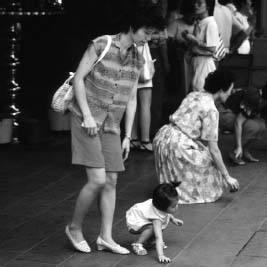Daoism and CctCustoms and Rituals |
Is exorcism important in Daoist practice? |
Many Daoist rituals are designed to expel, control, or pacify troublesome spirits, or, by extension, to banish drought, famine, or outlaws who might have been plaguing the local citizenry. Daoists rarely identify individual problems as personal cases of demonic (gui) possession. Much more common are instances in which a specialist’s skills are required to liberate temples, homes, and business establishments from evil influences. Until some thirty years ago, Roman Catholic tradition included a specific ritual to ordain young candidates for the priesthood to the Order of Exorcist, one of four so-called “minor orders.” Ordination to the Daoist priesthood still includes an emphasis on the ability to perform exorcism as one of its essential features. Rare descriptions of demonic possession suggest some elements similar to those described in Roman Catholic archival accounts of exorcism, including the need to have several stout attendants restrain the possessed person occasionally. After performing a variety of ritual actions, such as lighting candles and incense and burning the appropriate charm, the exorcist enjoins the spirit to depart and a contest of wills ensures. More common— indeed regularly scheduled—rites of temple purification may include dramatization of an encounter between the offending demon and the deity called Chung Kuei, dispatcher of demons. After the demon (sometimes played by a member of the temple staff or a professional actor) steals an incense burner, the priest/deity subdues the evil one and returns the stolen item to the temple gods. Only through the dominance of Yang over Yin can a successful exorcism be carried out. A high moment occurs as the high priest drives the evil spirit out to the accompaniment of intense sound from percussion instruments. Another method for ridding a building of an evil presence is to create billows of holy smoke by boiling oil and adding water to it.

Women and children drop and retrieve crescent shaped divining blocks in Taipei’s Xing Tian temple.
